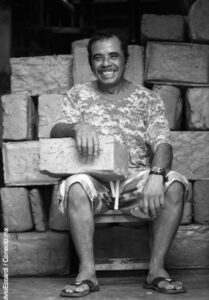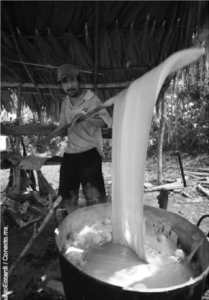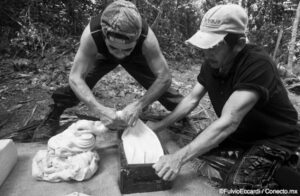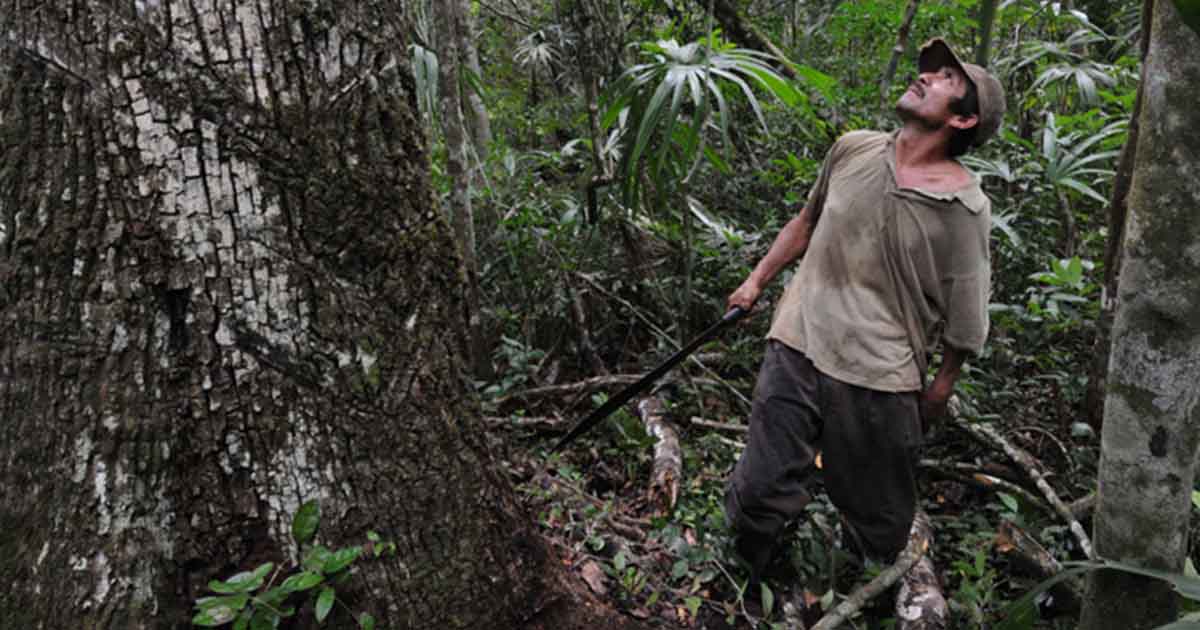Let's talk about the personal stories of a chiclero...
Undoubtedly, the stories of the natural gum producers in the Mayan rainforest, the “true guardians of the rainforest”, are magical, fascinating, full of wisdom and mysteries.
The contemporary development of chicozapote harvesting in the Mayan Rainforest began a century ago, today it is still in force, being one of the most important economic activities for the region. In addition, the historical memory of the chicleros has yielded many testimonies, stories and experiences in the different chicleros camps where they develop their fascinating work.
Here are some stories from these guardians of the Mayan rainforest and their experience with chewing gum:

• P. Arguelles (81 years old).
“I had the opportunity to work on chewing gum from 1922 to 1955 in many places in the State of Q. Roo, I started near Cancun, in some camps: The dead mule, The stinky water, near Buenaventura, where seven kilometers You were arriving at a place called La Vega and near there was Paamul. A railway line started from Leona Vicario, with several stations. I was working in Tres Marías and in Moctezuma, where the Baduy family's central station was located. Later, in the south, I worked in Laguna Guerrero, where I arrived by a road near the coast of Bacalar, there I was in the Buenavista chicle camps”.
• Marco Dionisio Cach Chu (66 years old), ejidal commissioner of X-Yatil:
"Our grandparents worked with chewing gum, it has been a very good job for us. During all this time, chewing gum is a fundamental job for the community, since 100 years ago the first settlers were precisely producers of this product from the Mayan jungle."
• Felix Zima (79 years old).
“I was a chiclero for 50 years only until my eyesight no longer allowed me and I had to leave the activity, my grandparents were gum workers, I learned by walking with them in the mountains, I did not care about the risk of falling, I fell in love with this I work and that is why I dedicated 50 years to the extraction of chewing gum. To date, the Chiclero Consortium supports me with medicines and other benefits, even when I stopped chewing 10 years ago”.

• Alfredo Rodríguez, ejido of Tres Garantías.
"I only need my machete, some boots armed with spurs and a rope to climb about seven meters of the bark of the tree, from the bottom up, creating a zigzag path for the gum resin to drain."
"I have climbed sapodilla trees since I was 15 years old and I have fallen twice, and I keep climbing the tree because God has another destiny for me"
• Macario Leyva (46 years old), ejido of Noh Bec.
“For more than 100 years, we have faced ups and downs, falling prices in international markets and competition from synthetic chewing gums led us to face major economic crises, but nothing has discouraged us, not even the passage of Hurricane Dean. in 2007, although it brought us down the chewing gum production from 180 to 200 tons per season to only 40 tons in the 2007-2008 cycle. It affected us in the production, but not in the spirit, we continue working to continue advancing in this dream and we are on the right path with the production and commercialization of chemical-free organic chewing gum.
After decades of struggle and work, finally this 2009 will be the take off and we will be able to make our dream and that of our parents come true. It is the year of the take-off of organic chewing gum Chicza, we have the opportunity to enter the European market with our own and innovative product, which has managed to position itself among the 20 most innovative products at the Biofach fair in Germany, it fills me with pride that after more than 100 years of working as chiclers, selling marquettes, we now have our own brand ”.
• Gregorio Martínez López, Nicolás Bravo ejido.
“During the twentieth century, the chiclema activity such as wood cutting represented the economic engine for the population of the then federal territory and today constituted as the state of Quintana Roo, but in reality the Chiclero Pilot Plan (Chicza), was the one that gave a value added to the resin that we work with. The Chiclero Consortium has represented an economic advance for us ”.

• Alfonso Valdez Ruiz +, ejido of Nuevo Becal.
“I am the producer with more years in the chicle industry and the elaboration of this product begins with the setting of the sapodilla tree to extract the latex through the runoff through connected channels, the resin is placed in a saucepan over low heat, to that with my circular movements the cooking and dehydration are carried out to obtain the gum. Then I put it on a wooden frame to shape it.
The next step is to wait for it to dry before taking it to the factory, there they add flavor and we export it to Belgium, Germany, Holland, England, the United States and Canada”.
• Raymundo Terrón (68 years old), ejido of Tres Garantías.
“After the bark of the tree is sliced, it takes seven years for the wound to close and be ready for harvest in the rainy season between August and February, this is the cycle of life, for example, when a A woman gives birth, it is with pain and when the sapodilla gives the resin, it gives it with pain when the chiclero bites her”.
Markets and conservation are possible!
With Chicza, you discover the Mayan rainforest.

Comments